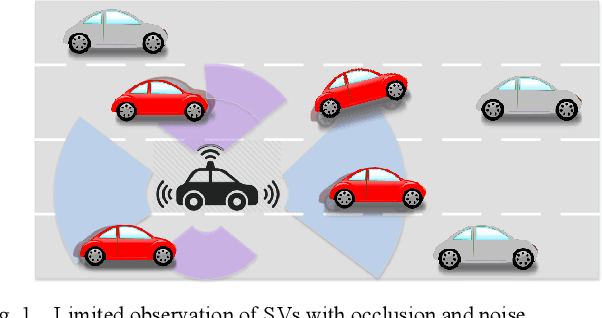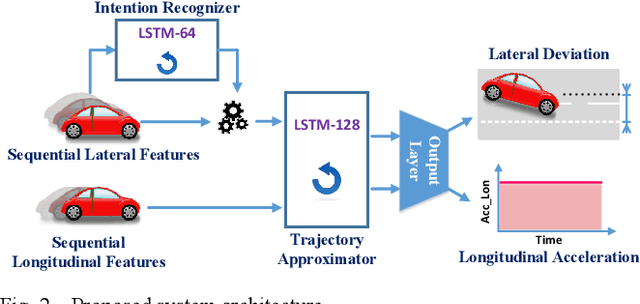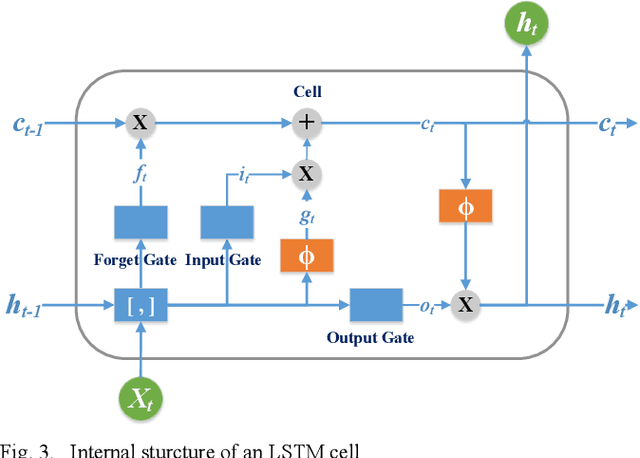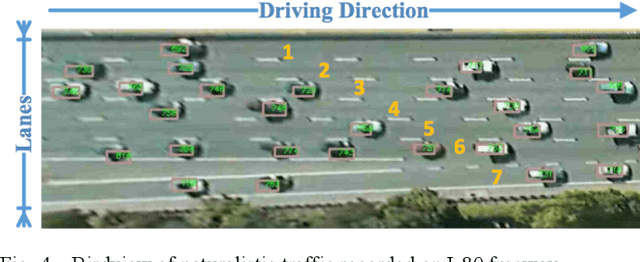Long Xin
Intention-aware Long Horizon Trajectory Prediction of Surrounding Vehicles using Dual LSTM Networks
Jun 06, 2019



Abstract:As autonomous vehicles (AVs) need to interact with other road users, it is of importance to comprehensively understand the dynamic traffic environment, especially the future possible trajectories of surrounding vehicles. This paper presents an algorithm for long-horizon trajectory prediction of surrounding vehicles using a dual long short term memory (LSTM) network, which is capable of effectively improving prediction accuracy in strongly interactive driving environments. In contrast to traditional approaches which require trajectory matching and manual feature selection, this method can automatically learn high-level spatial-temporal features of driver behaviors from naturalistic driving data through sequence learning. By employing two blocks of LSTMs, the proposed method feeds the sequential trajectory to the first LSTM for driver intention recognition as an intermediate indicator, which is immediately followed by a second LSTM for future trajectory prediction. Test results from real-world highway driving data show that the proposed method can, in comparison to state-of-art methods, output more accurate and reasonable estimate of different future trajectories over 5s time horizon with root mean square error (RMSE) for longitudinal and lateral prediction less than 5.77m and 0.49m, respectively.
 Add to Chrome
Add to Chrome Add to Firefox
Add to Firefox Add to Edge
Add to Edge